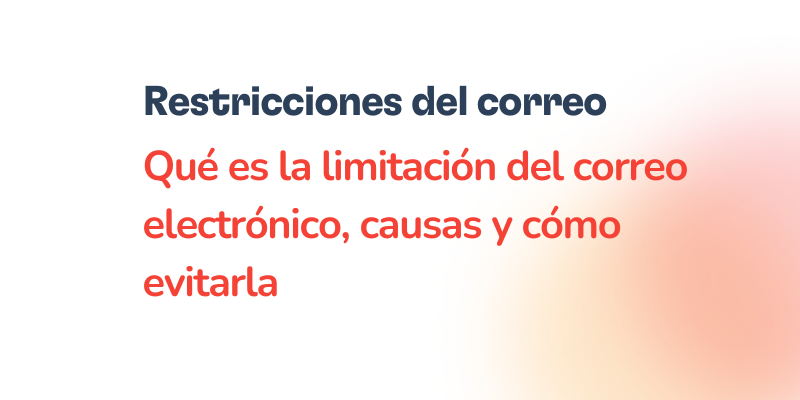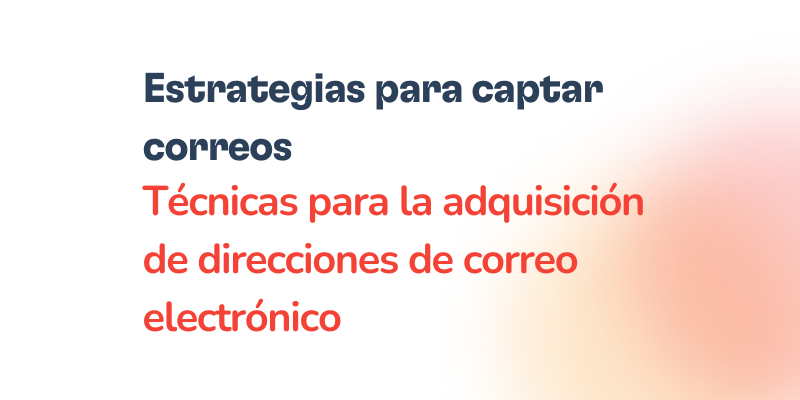We wrote a lot about how to avoid the spam folder, and what steps you need to take to do this, in this article we want to talk about how to protect your email from spam.
According to the Statistician, over the past 5 years, the percentage of emails identified as spam has averaged 55 %.
I am sure that every person who uses his e-mail receives spam every day. This is very annoying. It’s probably impossible to completely eradicate spam unless you stop using the Internet.
Every year the algorithms of mail providers become smarter. Mail providers try very hard to protect their users from spam, but many emails still end up in our mailboxes and interfere with our lives, and sometimes, on the contrary, important emails end up in the spam folder. Nobody is immune from this.
What is spam or junk mail?

This is a mass sending of intrusive e-mails, which usually contain advertisements or offers of services. At the same time, spam can be both harmless (for example, daily news from an online portal or a newsletter about discounts in an online store that you did not subscribe to) and dangerous (emails with links to phishing sites or malicious attachments). However, all emails that can be called spam have one thing in common – you don’t want to receive them.
In many ways, how much spam we receive depends on our behavior. Let’s look at the steps you need to take to protect your email from spam.
1. Choose reliable email providers.
The protection of your mailbox depends on the choice of an email provider.
The prevalence of spam emails continues to pose significant threats to email users, leading many to wonder how they can protect themselves. Using a reliable email provider is one of the primary ways to safeguard your email account. These providers have robust security measures in place that help filter incoming mail to help eliminate unwanted messages, including spam email.
Aside from using reputable email companies, there are other important measures to take to prevent spam messages from infiltrating your inbox. For instance, setting up strong passwords can keep your email account secure from malicious hackers. It’s recommended to use unique alphanumeric passwords that include special characters in addition to upper and lower case characters.
You can also use filters to restrict incoming messages based on specific criteria, such as subject line, sender email address, or certain keywords. Most email providers offer this feature, which allows you to delete or move emails that meet specific criteria to blocked senders or spam folders.
The best email provider are:
✅ Gmail
✅ Outlook
✅ AOL Mail
✅ Yahoo Mail
✅ Zoho Mail
✅ Yandex Mail
✅ and other
It is known that Gmail and Outlook have the most stringent spam filters.
2. Train your email provider's spam filters.
One effective measure you can take is to train your email provider’s spam filters. By doing so, you can teach your email provider which emails to immediately send as spam in the future.
To train your email provider’s spam filters, you need to show your email service which emails you don’t want to see. If you receive an email and you suspect it’s spam, mark it as Spam. Most email providers, such as Gmail, have an option to select an email and send it to the spam folder.
When you regularly mark a particular email as spam, your email provider will eventually learn to recognize those types of emails and automatically classify them as spam. This means that those emails will no longer appear in your inbox, but will instead be filtered directly to the spam folder.
Furthermore, it’s essential to remember that your email provider’s spam filter is not perfect and can’t catch all spam emails. Therefore, it’s still necessary to be vigilant and cautious when opening emails from unfamiliar senders. If you receive an email that seems suspicious or unsafe, don’t click on any links or download any attachments that may contain malware.
3. Do not leave your email on public sites.
Email security is a crucial aspect to consider when it comes to protecting oneself from spam and unwanted emails. One practical step that can be taken to ensure email safety is to avoid leaving your email on public sites. This is because scammers and spammers often scour open sources for emails that they can use to send unwanted messages.
Social media platforms and online forums are common areas where people share information about themselves, including their email addresses. However, it is important to note that not all of these platforms are secure. It is, therefore, important to make sure that you do not make your email public in such places. Most social media platforms and forums provide an option to hide your email, and it is always a good idea to take advantage of this feature.
Moreover, subscribing to newsletters from unknown or untrusted sites can also result in spams filling up your inbox. It is always wise to subscribe to newsletters only from sites that you know and trust. You can also frequently review the list of sites that you have subscribed to and unsubscribe from those that send irrelevant information or come from unrecognizable sources.
In conclusion, email security should be a top priority in our daily online activities. By following simple steps such as not leaving your email in public sites, avoiding unknown newsletters, and being cautious about the sites you subscribe to, you can ensure that your inbox remains safe from unwanted emails.
4. Create a separate email for general use.
With the increasing threat of spam and phishing attacks, it has become increasingly important to safeguard your primary email account. One of the easiest ways to do so is by creating a separate email account solely for general use. This will ensure that all your important emails are pre-filtered from unwanted messages and spam.
By having a separate email account, you can conveniently sign up for newsletters, subscriptions, and receive important information for a short period without mixing it with your main email inbox. This way, you can avoid the hassle of having an overflowing inbox and sift through unnecessary emails for essential ones.
Furthermore, it is crucial not to associate any financial services with your secondary email account. Avoid registering it with banks or other financial institutions, as cybercriminals continually seek financial information through phishing attacks. By having a clean, clear, and organized email inbox, you will enhance your email security and mitigate the threat of cyberattacks.
In conclusion, creating a separate email account for general use is an easy and effective way to protect your primary email from spam and phishing attacks. By doing so, you can avoid the tedious task of filtering through unwanted emails and ensure the security of your personal information. It is essential not to register this email account with any financial services to reduce the risk of revealing your financial details to cybercriminals.
5. Mailbox hygiene.
Maintaining good mailbox hygiene is a critical step towards protecting your email from spam. It is imperative to keep your mailbox clean and tidy to avoid unwanted emails from accumulating and cluttering your inbox. One practical way to ensure this is to unsubscribe regularly from any mailing lists that you do not even read or open. By doing so, you reduce your exposure to spam emails and take control of your inbox.
Unsubscribing from a mailing list is typically an easy process that requires only a few clicks. However, there are times when you may have to navigate to the site of the mailing list itself. In such cases, make sure to login to your account on the mailing list’s website and uncheck the boxes that notify you of any new emails or newsletters from their site.
Maintaining good mailbox hygiene involves more than just unsubscribing from mailing lists. You should also delete any junk mail or spam messages that end up in your inbox promptly. These messages often contain links that can lead you to fraudulent websites, or worse, infect your computer with malware. If you are unsure of the legitimacy of an email, you should delete it without opening it or clicking on any links it contains.
Another way to maintain good mailbox hygiene is to use spam filters. Most email services provide spam filters that help block unwanted emails and prevent them from getting into your inbox. You should also be cautious about giving out your email address online. Avoid sharing it with untrusted sources, especially if you are not certain about their intentions.
6. Don't reply to spam.
One simple step to protect yourself from spam is to avoid replying to any suspicious email. In many cases, spam emails are sent out in mass, and replying to them could confirm to the sender that the email address is active. This, in turn, could result in more spam emails being sent to that address.
However, the best way to protect your email from spam is to be vigilant while reviewing the content of incoming emails. If an email appears suspicious based on its subject, sender, or formatting, it is best to delete it immediately or mark it as spam. Most email services have spam filters that will automatically redirect such emails to the spam folder.
In case you have already opened a suspicious email, it is crucial not to interact with it in any way. This means not clicking on links, not downloading files, not responding to the sender, or forwarding the email to anyone else. Doing any of these could activate a virus or other malicious software designed to infiltrate your device or network.
One common technique that scammers use is to create a site that appears similar to the original one, but with slight variations in the web address. Therefore, it is essential to check the web address URL carefully before entering any sensitive information.
7. Use of specialized tools.
Cybercriminals often use spam emails to steal personal and sensitive information from unsuspecting users. To safeguard your mailbox from spam emails, it is essential to use specialized tools.
The market is flooded with a plethora of anti-spam filters that can effectively combat spam emails. These tools employ various tactics like analyzing email contents, sender information, and user behavior to filter out unwanted emails. Additionally, they use advanced machine learning algorithms to identify spam emails accurately.
One such popular tool is Trustify Inbound Shield. It is a cloud-based anti-spam filter that provides multi-layered protection to your mailbox. Trustify Inbound Shield uses various techniques like Bayesian filtering, real-time DNS blocking, and greylisting to protect your mailbox from spam emails. Hornetsecurity Email Spam Filter and Malware Protection Service is another reliable tool that provides an additional layer of protection against malware attacks.
N-able Mail Assure is another popular anti-spam filter that provides comprehensive protection against spam, malware, and phishing emails. It uses advanced filtering techniques to identify spam emails and can also block email attachments that contain viruses. SpamTitan is a cloud-based anti-spam filter that uses various techniques like machine learning and AI to filter out unwanted emails.
Apart from these tools, users can also use other spam-filtering tools like SaneBox, SpamBayes, and Mailwasher. These tools, when used in combination, can provide robust protection against spam emails.
Conclusion
Taking control of your email security requires a few steps, but it can be done with some effort and planning. With the right tools and strategies in place, you can protect yourself from spam and phishing emails, reducing the risk of identity theft or data loss. You should also consider taking extra measures such as installing antivirus software to protect your device from malicious threats. A good practice is frequently updating your passwords and setting up two-factor authentication for extra authentication.
By doing these small tasks regularly, you will ensure that your personal information is safe from hackers who might be lurking out there in cyberspace trying to take advantage of vulnerable victims. Moreover, if you are about to open an account for a service that you don’t know much about, make sure to do thorough research first so that you’re aware of all its features before entrusting it with important data. It may take some time to defensively secure your email messages, but the investment will definitely be worth it!
🔥 Ready to improve your email deliverability and ensure that your emails always land in the inbox? Warm up your email with the reliable assistance of Warmy.io!
Our email warm-up process will gradually increase email activity from your domain, building a positive reputation with email service providers. This will ensure that your emails not only reach the inbox but also engage your audience effectively.
Don’t wait any longer, give your email campaigns their best chance and warm up your email with Warmy.io!








![Text on a white background reads: SMTP Error 450 4.0.0 How to Resolve [SOLVED], with emphasis on smtp error 450 4.0.0 and How to Resolve [SOLVED] in red font.](https://warmy-blog-wordpress-bucket.s3.amazonaws.com/wp-content/uploads/2025/11/19084901/SMTP450-400.webp)



